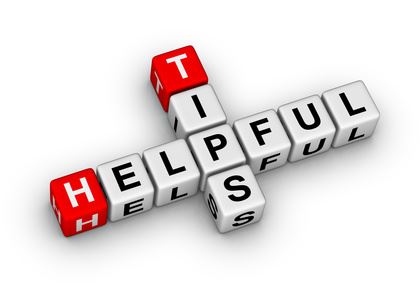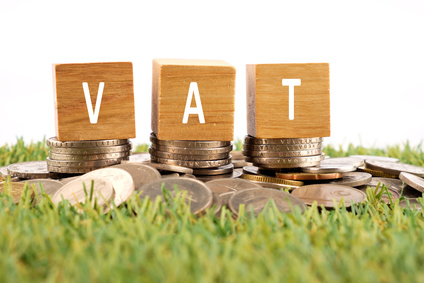 Did you know you can choose which VAT Scheme you use to report VAT?
Did you know you can choose which VAT Scheme you use to report VAT?
There are several to choose from and it is worth considering which one is best for your business and for your cash flow. Whichever scheme you choose to use does not change the amount of VAT you charge your customers. If your sales are subject to standard rate VAT you must charge 20%. If you supply services which are classed as reduced rate you charge 5%. And, of course, if you provide goods or services which are classed as zero rated then the VAT rate you charge is 0%.
Here is a brief description of each of the VAT schemes with the advantages and disadvantages of each.
Standard Accounting
This is the one that most people use. VAT is included on your VAT return based on the date you put on the invoice to your customers and you claim back VAT based on the date on your supplier’s invoice or the date of the receipt.
Advantage – You can claim back VAT on purchases when they are invoiced and before you pay them
Disadvantage – You have to pay VAT on all your sales invoices before your customer has paid you
You would use this scheme if your customers are prompt payers or you receive immediate payments from online or shop sales because you can claim back VAT on the purchases before you have to pay for them.
Cash Accounting
If you use this scheme you include the VAT on sales on your VAT return only when you have received payment from your customers and you claim back VAT on your purchases when you pay your supplier.
Advantage – You only pay across VAT to HMRC when you have actually received payment from your customer.
Disadvantage – You can’t claim back VAT on any purchases which you haven’t paid for in the VAT quarter even if the invoice is dated within the VAT quarter.
If you use this scheme ensure that you pay your VAT registered suppliers before the end of the VAT quarter rather than at the beginning of the next VAT quarter as it will increase the VAT that you are able to claim back.
Flat Rate VAT
Whilst VAT is still charged to your customers at 20% you only have to pay a percentage of the VAT paid to you across to HMRC. If you choose this scheme you will not be able to claim back VAT on any purchases except on assets over £2,000. The percentage varies according to the industry you are in. For example if you provide catering services you would pay across 12.5% of your gross sales and if you were repairing vehicles it would be 8.5% of gross sales. Here is a full list of flat rate percentages.
Advantage – No requirement to keep VAT receipts for every purchases. Record keeping is simpler. There is a 1% discount on your industry percentage if you register for flat rate VAT in your first year of VAT registration.
Disadvantage – You regularly need to check that this is still the best option for your business if you are buying an increasing number of goods and/or services which have VAT on. If the goods you purchase are less than 2% of your turnover or less than £1,000 per year you will have to use a flat rate percentage of 16.5% whatever industry you are in.
This scheme sounds like it will help your cash flow because you pay HMRC less than you receive but remember the VAT is calculated on your gross sales. It is available to aid simpler record keeping.
You can apply for this scheme if your turnover is less than £150,000 per annum net of VAT and you will have to leave it when your turnover reaches £230,000 per annum. You can use either the standard or cash accounting methods of reporting VAT within this scheme.
Annual Accounting
This scheme requires you to submit a single VAT return annually. Fixed monthly payments are made for 10 months of the year in advance of submission of your return. Once your annual VAT return is submitted the balance is payable or you can apply for a refund if you have overpaid. You have to apply to join this scheme.
Advantage – Regular monthly payments
Disadvantage – No incentive to keep VAT records up to date regularly. Would not suit a seasonal business as there may not be cash available in some months to pay the fixed amount or to pay the balance. Would not suit a business that receives regular VAT refunds as the refund would only be paid annually.
 Whichever scheme you choose for your business there are restrictions and you should ensure you understand these restrictions before you make your decision. Once you have chosen either the Flat Rate or Annual Accounting schemes you will not be able to change to another scheme within 12 months. You can change from the Standard to the Cash Accounting schemes or vice versa without applying to HMRC but you must keep accurate VAT records during the period of change to ensure that you are reporting all the VAT that is due and not duplicating any claims for purchase VAT. It is not necessarily a simple changeover.
Whichever scheme you choose for your business there are restrictions and you should ensure you understand these restrictions before you make your decision. Once you have chosen either the Flat Rate or Annual Accounting schemes you will not be able to change to another scheme within 12 months. You can change from the Standard to the Cash Accounting schemes or vice versa without applying to HMRC but you must keep accurate VAT records during the period of change to ensure that you are reporting all the VAT that is due and not duplicating any claims for purchase VAT. It is not necessarily a simple changeover.
Finally any change you make to your VAT accounting scheme must be done at the beginning of a VAT period.
I hope this brief summary of the different VAT schemes will make you take a look at your own business and check whether you are using the most appropriate scheme. It makes sense to review it from time to time as circumstances change and what may have been best for your business 5 years ago may not be best now. At the end of the day VAT is calculated quarterly (for the majority of businesses) and whether you choose standard or cash accounting the VAT will be paid and reclaimed at some stage whether that is sooner or later but that doesn’t stop you choosing a scheme which benefits your business.
Leave a Reply